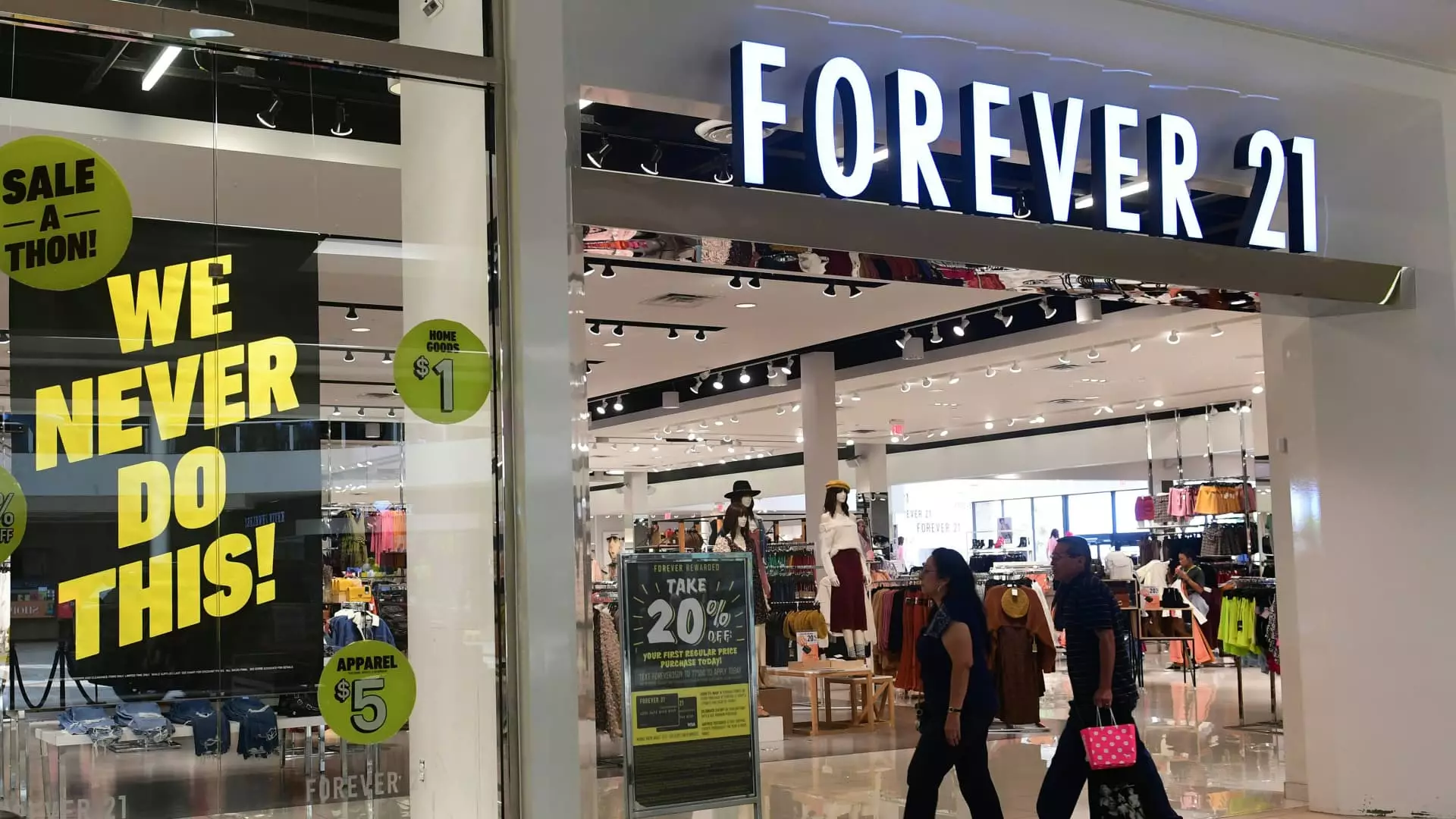Forever 21, once a delightfully vibrant player in the fast fashion scene, is now standing precariously on the brink of financial collapse. According to insider sources, the retailer has recently engaged in discussions with liquidators, indicating its precarious situation as it contemplates a potential second bankruptcy filing. This bleak development comes in the wake of ongoing difficulties in securing a buyer for its U.S. assets. The company, which previously emerged from bankruptcy in 2019, is now finding it exceedingly challenging to adapt to a rapidly evolving retail landscape that has severely outpaced its operational model.
Faced with the daunting realities of intensified market competition, particularly from aggressive e-commerce titans such as Shein and Temu, Forever 21 struggles to maintain relevance. Reports suggest that all options are being considered, including liquidating assets to satisfy creditors should a buyer remain elusive. Unfortunately, this means that Forever 21’s once-iconic brand name and image—a vital component of its identity—are not currently up for sale, further complicating its future.
The ownership of Forever 21’s intellectual property by brand management firm Authentic Brands Group adds another layer of complexity to the situation. Unlike traditional retail scenarios, the physical brand often becomes a mere shell once its intellectual assets are disentangled from its operational woes. This raises pressing questions about the future of Forever 21 as a retail entity. With Authentic Brands Group holding the reins to its brand name, the possibility of reviving the retailer in any recognizable form appears increasingly tenuous.
Claiming that it is “exploring strategic options” may seem like an optimistic maneuver, yet internal sources indicate that previous efforts to stabilize financial footing—such as negotiating rent reductions with landlords—have yielded limited success. The reality is clear: Forever 21 has struggled to not just manage its branding but also to streamline its inventory systems and implement cost controls effectively.
The Compounding Challenges of Competition
The shift in retail dynamics has not only affected Forever 21 but has fundamentally altered the fabric of the fast fashion sector. Emerging online entities, namely Shein and Temu, have redefined consumer expectations with their speed and adaptability. These companies leverage advanced technology and artificial intelligence to navigate consumer trends with remarkable precision, leaving traditional retailers like Forever 21 scrambling to keep pace. By comparison, brick-and-mortar operations sink under the weight of high overhead costs and vast inventory management issues.
Industry insiders express skepticism about Forever 21’s ability to attract buyers capable of turning around the brand in its existing format. With competitors fully exploiting the advantages of online retail, the notion of a revamp appears rather improbable. Market conditions have shifted to such an extent that any viable future for Forever 21 may hinge on an almost complete overhaul of its business model, encompassing everything from supply chain logistics to in-store designs.
As Forever 21 grapples with existential questions about its future, the urgency for a strategic pivot grows. Should the company decide to proceed with seeking buyers for its remaining assets, its inventory and store leases will be assessed for value against its burgeoning debt obligations. Meanwhile, the prospect of liquidating the chain could serve as a temporary solution, allowing it to pay back creditors but ultimately leading to its dissolution as a recognizable brand.
Interestingly, despite the bleak outlook, there remains a slim possibility that Authentic Brands Group could reposition Forever 21 in a different mold entirely. The market for distressed assets does create opportunities for revival, albeit under significantly different operational parameters. However, for such a transformation to occur, the new structure must decisively address the competitive pressures present within the marketplace.
Lessons from the Retail Landscape
The struggles of Forever 21 provide crucial insights into the evolving retail landscape. Much like the pre-2010 dominance of prominent department stores that were suddenly outmatched by e-commerce giants like Amazon, Forever 21 finds itself at a crossroads reminiscent of that seismic shift. The accelerated rise of digital consumerism has led to the decline of several iconic retail brands, exposing the vulnerabilities of those ill-equipped to pivot effectively.
Overall, the fate of Forever 21 serves as a candid reminder of the importance of agility and innovation in retail today. Whether the company can chart a new course remains uncertain, but it is undoubtedly at a pivotal moment that could redefine its legacy or lead to its ultimate dissolution. The relentless currents of the retail disappearance—of outdated models swept away by the tides of change—undoubtedly raise an uncomfortable yet necessary dialogue about the survival of traditional brands in an era dominated by speed, technology, and shifting consumer demands.

